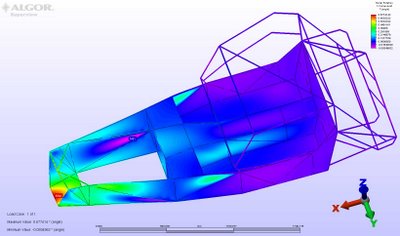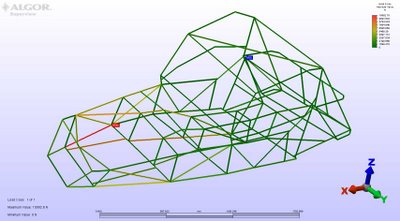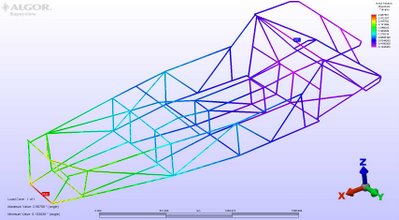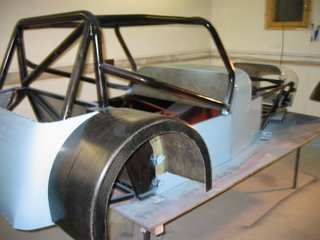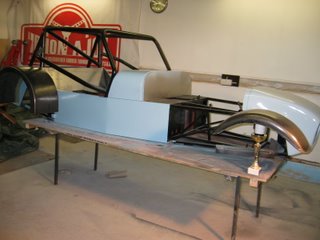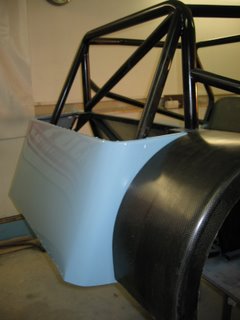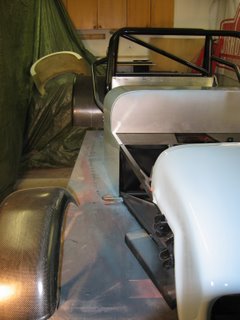 Places for the shoulder harnesses. According to FIA regulations they have to last a force of 14700N per belt. According to calculations just the tube should be enough. This solution was much more lighter than adding a roll cage tube into the trunk area to mount the tubes.
Places for the shoulder harnesses. According to FIA regulations they have to last a force of 14700N per belt. According to calculations just the tube should be enough. This solution was much more lighter than adding a roll cage tube into the trunk area to mount the tubes. We started to install the engine electrics. The wiring is sorted out and all the components are installed.
We started to install the engine electrics. The wiring is sorted out and all the components are installed. We decided to add a tube to give protection for the driver's feet. There will also be a diagonal brace in the "roof". The steering axle is mounted, main electrical cut off switch is installed and the fenders have been installed.
We decided to add a tube to give protection for the driver's feet. There will also be a diagonal brace in the "roof". The steering axle is mounted, main electrical cut off switch is installed and the fenders have been installed. A closer shot of the rear fender mounting. There's also screws on the inside.
A closer shot of the rear fender mounting. There's also screws on the inside. At this point there's so much to design as we build the first car, that when we get resistance or are waiting on parts to arrive it's nice to go to the other car and do the same stuff that we already did on the first.
At this point there's so much to design as we build the first car, that when we get resistance or are waiting on parts to arrive it's nice to go to the other car and do the same stuff that we already did on the first. Gearshifter placement. It will be on the right side, next to the roll bar.
Gearshifter placement. It will be on the right side, next to the roll bar. The gearshift cable at the engine end.
The gearshift cable at the engine end.(EDIT 2008: This shifter as we installed it isn't advised. The cable made such tight bend that it had enormous friction. It was a bit tricky to shift because the lever didn't move back to the middle position by itself. Also finding neutral was difficult)
